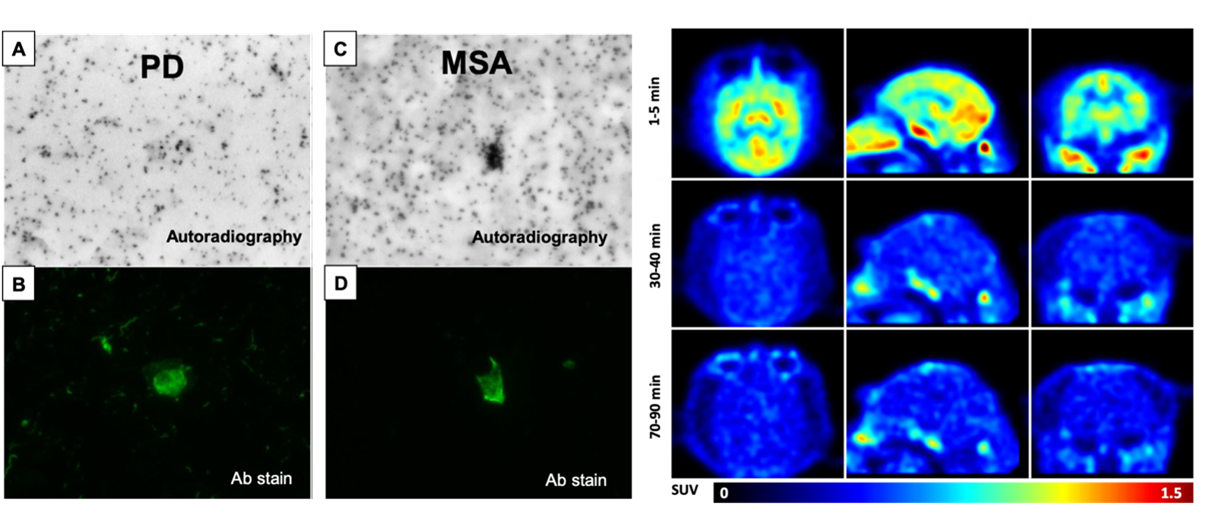Small molecules that bind to alpha-synuclein deposition and can be used for PET imagining in patients with synucleinopathies
Problem:
Imaging alpha-synuclein (αS) using noninvasive techniques such as positron emission tomography (PET) can help with the early diagnosis of synucleinopathies. Previous PET radiotracers suffer from low binding affinity and off-target binding to structurally similar proteins, such as amyloid-beta (Ab) and tau. Currently, there is no clear candidate for PET imaging studies in patients with synucleinopathies.
Solution:
Dr. Robert Mach and his team at the Medical School of the University of Pennsylvania have identified different scaffolds that exhibit varying propertied for imaging alpha-synuclein in the brains of patients with Multiple System Atrophy (MSA) and Parkinson's Disease (PD. This is a promising development in the clinical differentiation of MSA and PD patients and the monitoring of therapeutic strategies aimed at reducing alpha synuclein burden in the synucleinopathies.
Advantages:
- High binding affinity for alpha-synuclein: low nanomolar range
- 10-20 fold selectivity vs. tau
- 5-20 fold selectivity vs. amyloid beta
- High brain uptake and rapid washout

PET radiotracers combining autoradiography enable visualizing the distribution of aggregated α-synuclein in PD and MSA tissues
Stage of Development:
- Proof of Concept
- Early stage clinical trials
Case ID:
23-10326-TpNCS
Web Published:
1/16/2024
Patent Information:
| App Type |
Country |
Serial No. |
Patent No. |
File Date |
Issued Date |
Expire Date |